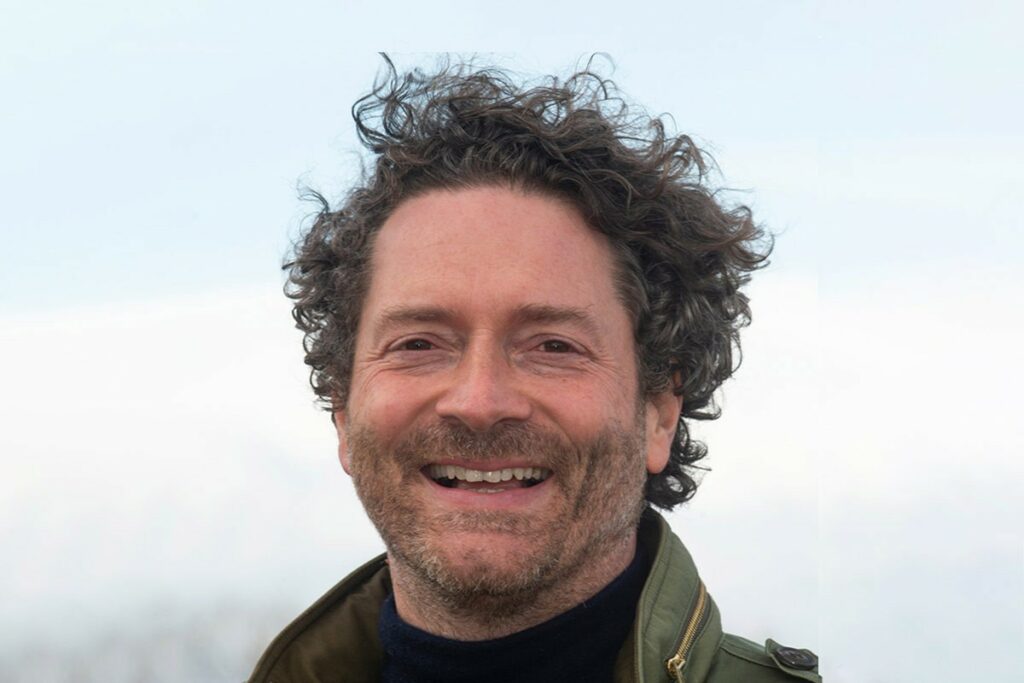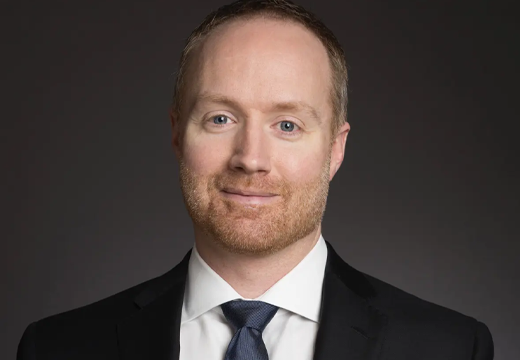GOAL 2014 Roundup: Aquafeed Seminar Centers on Environmental, Social Concerns
Aquafeed was the focus of a seminar at the Global Aquaculture Alliance’s GOAL 2014 conference in Ho Chi Minh City, Vietnam, on Oct. 7. For the first time, the organization dedicated an entire day of its four-day conference program to a particular topic — aquafeed, which garnered a lot of interest at GOAL 2013.
Separate from the plenary, the seminar—which featured 16 speakers and a robust question-and-answer component —drew various interests from the aquafeed sector, which shared their solutions to the major problems facing aquafeed production. The three major challenges identified by GAA are the environmental and social concerns related to aquafeed production, the potential of alternative protein sources and the need to approach aquafeed as an investment, not as a cost.
Held at the Park Hyatt Saigon, the seminar drew more than 150 delegates, filling the room.
Dawn Purchase of the Marine Conservation Society kicked off the seminar by laying out the environmental concerns related to aquaculture production. She challenged the audience to be part of the solution. “There is nowhere left to go. We need to ensure the sustainable management of wild fisheries to ensure [the growth of aquaculture]. I would urge everyone in the supply chain to act responsibility by contributing in whatever way you can.”
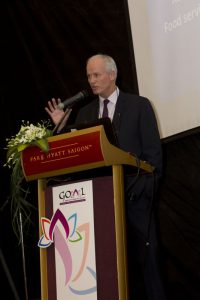 Meanwhile, Dan Lee of the Global Aquaculture Alliance’s Best Aquaculture Practices division (pictured at right) outlined the social concerns related to aquaculture production. “There is a link between poor fisheries management and poor social welfare—they go hand in hand,” he said.
Meanwhile, Dan Lee of the Global Aquaculture Alliance’s Best Aquaculture Practices division (pictured at right) outlined the social concerns related to aquaculture production. “There is a link between poor fisheries management and poor social welfare—they go hand in hand,” he said.
In addressing the environmental and social concerns, Anton Immink of the Sustainable Fisheries Partnership (SFP) provided an update on SFP’s work with fishery improvement projects (FIPs) in feed fish fisheries and the Asian Feed Fisheries Supplier Roundtable.
Immink talked a lot about environmental concerns. When asked about the social concerns associated with reduction and by-catch fisheries, Immink explained that the industry is still years away from certification at the fisheries level, though all sectors of the industry are actively working on a solution. “We’re looking at how social issues can be included in the process,” said Immink. “But we’re still on a five-year timeline. Certification is certainly five years away. I wouldn’t put a shorter timeframe on it.”
Andrew Mallison of IFFO followed Immink a presentation on fishmeal and fish oil production, recognizing that a lot more work needs to be done with the multi-species trawl fisheries and the social component of reduction and by-catch fisheries, where labor abuse is a major concern. There is not enough synergy between environmental and social third-party audits, he acknowledged.
Yet Mallison applauded the audience for its interest in finding solutions to the problems facing the industry. “It’s impressive to see so many people in the room. Feed was always so far removed from the sustainability discussion, particularly with the marketplace. By the faces I see in the room, it shows how different things are today,” he said.
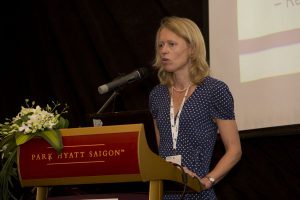 Two speakers—Libby Woodhatch of Seafish’s Responsible Fishing Scheme (RFS) (pictured at left) and Katrina Nakamura of Labor Screen Safe and Sustainability Incubator—specifically addressed the social concerns linked to aquafeed production.
Two speakers—Libby Woodhatch of Seafish’s Responsible Fishing Scheme (RFS) (pictured at left) and Katrina Nakamura of Labor Screen Safe and Sustainability Incubator—specifically addressed the social concerns linked to aquafeed production.
After Libby Woodhatch, Katrina Nakamura of Labor Screen Safe and Sustainability Incubator address the social concerns associated with feed production. “This issue is already in the public consciousness,” she said. “It’s a worldwide problem.” Labor Screen Safe provides a risk-assessment program that can be incorporated into a company’s existing social responsibility policy.
A United Kingdom-based program, RFS currently encompasses entitlement to work, human rights, living remuneration, working hours, crew discrimination and life on board. The question now is, “How do we internationalize the standards?” said Woodhatch. “We have to have global aspirations.”
“How would it work?” she asked. “The key will be whether a country will use its existing compliance or whether its compliance will need to be benchmarked.”
What’s the timeline? A certification body with international expertise has been appointed. In March 2015, the first vessels in the U.K. are expected to be certified against the standards, with an international launch anticipated in September 2015. “We need to make sure that the standards are ready for international use,” said Woodhatch.
Katrina Nakamura of Labor Screen Safe and Sustainability Incubator mimicked Woodhatch’s concerns. “This issue is already in the public consciousness,” she said. “It’s a worldwide problem.” Labor Screen Safe provides a risk-assessment program that can be incorporated into a company’s existing social responsibility policy.
The discussion then shifted to the potential of alternative protein sources, with the word “potential” being defined lightly. “Soy is no longer an alternative,” pointed out Steven Hart of the Soy Aquaculture Alliance, as soy is the No. 1 protein source in aquafeeds today. Hart’s presentation focused on soy-based research for better aquafeeds and the need for additional research.
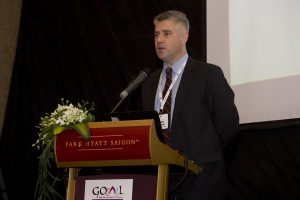 Meanwhile, Lukas Manomaitis of the U.S. Soybean Export Council (pictured at right) talked about the need for a feed formulation database. Currently, there’s no such database in seafood, though there is for other proteins, such as beef and pork. USSEC is trying to commission the first such feed formulation database globally.
Meanwhile, Lukas Manomaitis of the U.S. Soybean Export Council (pictured at right) talked about the need for a feed formulation database. Currently, there’s no such database in seafood, though there is for other proteins, such as beef and pork. USSEC is trying to commission the first such feed formulation database globally.
After Richard Smullen of Ridley Aqua-Feed and the World Renderers Organization, gave a presentation on processed animal products (PAPs), the discussion transitioned to up-and-coming protein sources, including worm meal and insect meal.
Ari Jadwin of Aquafude, which is based in Chengdu, China, gave a presentation on the potential of insect meal as a feed ingredient and the production of trout and sturgeon. Chengdu is China’s fastest-growing city. “It would be easy to adopt bad practices” in western China, where commercial aquaculture is a relatively new industry, said Jadwin. Aquafude works with farmers who buy the company’s high-quality feed, and, in turn, the farmers agree to sell the fish back to Aquafude. The company supplies the fish to high-end restaurants and hotels in western China. “We have this platform to implement, and we want to do this in the fastest-growing part of China before the competition takes hold,” said Jadwin.
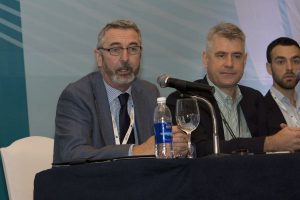 A summary of the Day 0 aquafeed seminar followed at the Day 2 plenary. Lee moderated a 30-minute panel featuring Mallison, Manomaitis, Jadwin and Nakamura, who answered a series of questions from Lee and audience.
A summary of the Day 0 aquafeed seminar followed at the Day 2 plenary. Lee moderated a 30-minute panel featuring Mallison, Manomaitis, Jadwin and Nakamura, who answered a series of questions from Lee and audience.
After the Q & A, the audience was asked, through the automatic response system, “What’s the No. 1 challenge facing aquafeed production?” One-third said environmental concerns associated with reduction and by-catch fisheries, and 30 percent said feed approached as a cost, not an investment. About 15 percent said lack of investment in alternative protein sources, while 12 percent said labor abuse aboard vessels in reduction and by-catch fisheries was the No. 1 issue. Eight percent said the lack of common requirements related to feed was the biggest challenge, and only 2 percent identified the use of GMOs as their No. 1 concern.
The audience was also asked, “Which sector needs to be held more accountable for the challenges facing aquafeed production?” Some 40 percent said feed manufacturers, 22 percent said aquaculture producers, and 15 percent each said government and feed fish fisheries.
Photos courtesy of Gail Hannagan of Preferred Freezer Services.

